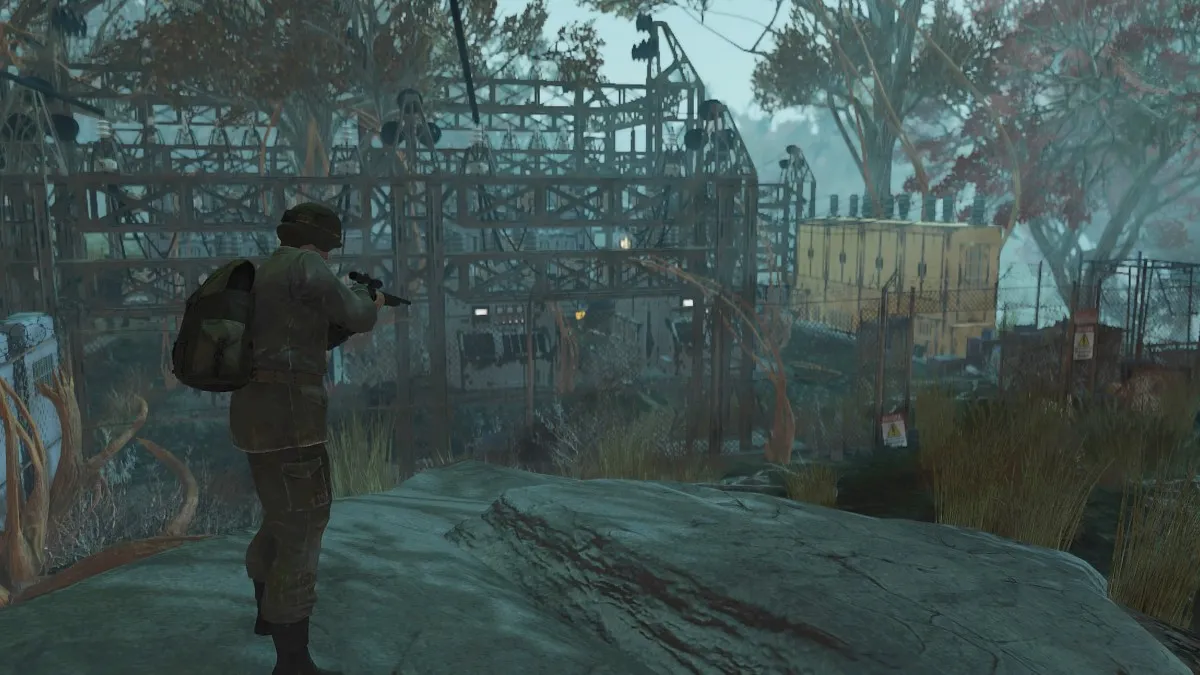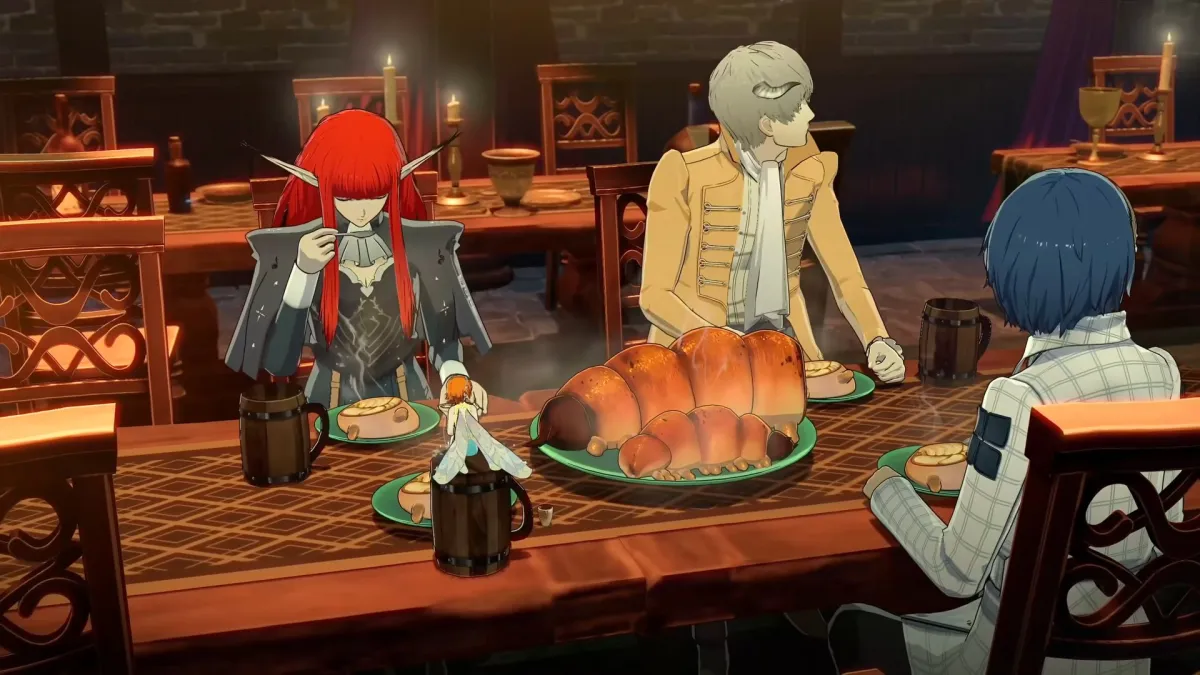All week, we’ve been showering you with much more terror than you get from your biweekly journey into Dark Dreams, from scary video and tabletop games to terrifying movies both well known and obscure – even a foray into comic books so scary they were banned. None of these things, however, is on this list. This is the list of things that scare the pants off of us, that leave us heaving in terror upon the ground, nearly vomiting. That cause us such existential dread we stop speaking, or end conversations, or sit up at night wondering. That make you stop playing for the day, or pause the movie, or turn off the TV and go hug a pet.
Okay. Here we go, dear readers. This is the scariest stuff there is.
Well, this year, at least.
McKamey Manor
Never has something inspired “You couldn’t pay me enough!” and “Nope nope nope!” quite like McKamey Manor Extreme Haunted House, but for some folks a corn field maze just doesn’t cut it for Halloween. This extreme haunted house touts that you can live out your own horror film, and it has been criticized for basically being legal torture. For those wanting to take their scares to another level, there’s not too many places like it. Unlike your average haunted house that lasts 20 minutes with a few teenagers dressed as skeletons and somebody’s dad with a chainsaw trying to jump scare you, McKamey Manor is a two to four hour (variable length, you know, so you don’t know when it’s going to end) experience to eat away at your sanity and resolve. The actors can and will touch you with scrapes, cuts, bruises not uncommon. All manner of unsavory liquids and creepy crawly creatures are also involved. All that said, there waiting list is reported to be over 17,000. To even enter you must first read their warning page and sign a waiver, in addition to being over the age of 21. Yeah, nope. I’m good.
One odd twist is that it’s free, with the only cost of entry being four cans or one bag of dog food. I’m not sure whether it makes it better or worse that they are doing this altruistically.
The Stanford Prison Experiment
Aliens, monsters, demons… we really don’t need to call upon fictional creatures to fill our nightmares. Some of the most frightening fiends imaginable already inhabit this planet: us. Psychological studies have lent some insight into what can cause human beings to perform horrific acts, and the ease with which a “normal” person can turn sadistic given the right circumstances is unnerving.
Take, for instance, the Stanford Prison Experiment, conducted in 1971. Test subjects were divided into two groups – prisoners and guards – and made to roleplay a standard prison scenario for two weeks. After only six days, the experiment was discontinued abruptly when a grad student in psychology came to conduct interviews and, based on what she had learned, objected to the experiment on moral grounds.
You see, the participants adapted to their roles too well. After only one day, some had already internalized their roles, feeling as though they actually were prisoners or prison guards. After a Day 2 prison revolt, the guards became increasingly sadistic in their treatment of the prisoners – they would issue physical and psychological punishment, force prisoners to live with their own excrement, remove mattress privileges, strip them naked… and worst of all, the lead researcher, psychology professor Philip Zimbardo, became so absorbed in his role of prison superintendent that he permitted these actions. The guard’s behavior became increasingly cruel, and by the end, it was reported that one-third had exhibited genuinely sadistic tendencies and that most of the guards were upset that the experiment was cut short.
Scary what a little power can do to a person.
Alma in the first F.E.A.R.

The fear factor (ba dum tish) of this series got kind of watered down in subsequent iterations, but Monolith nailed using Alma to dial up the tension and atmosphere in their first outing. Drawing on inspiration from Samara from The Ring among other sources, there’s just something undeniably unnerving about creepy children. Usually Alma would show up in longer drawn-out hallucinations, but they weren’t afraid to indulge in a jump scare or two – that had me impulsively firing off half my shotgun ammunition. FEAR’s fumble was that it tried to explain too much. Similar to how the theatre of the mind is often the most frightening, once all the curtains are pulled back and everything is tied up with a neat bow it lost all the mystery. But there was a golden few hours where Alma was genuinely scary
Second place goes to those ninja f***ers that jump down from the ceiling at you.
The Soviet Doomsday Ship
In the crazed height of the cold war, a proposal crossed Nikita Khrushchev’s desk that supposedly ordered – or had already ordered – it’s not wholly clear – the construction of a gigantic doomsday ship. This beast, to move just off the Russian coast at all times, was a cargo ship to loaded with an immense amount of fissile material, and literally hundreds of hydrogen bombs capable of producing an explosion so vast it would render the planet uninhabitable. The scariest part? The explosives would have been automated, rigged to a system that detected atmospheric radiation. That way, even if the Soviet Union was taken off guard by nuclear attack, the automatic system would get revenge on the world by cracking the planet’s crust, triggering massive earthquakes, and filling the world’s atmosphere with deadly radioactive material. According to the story, Khrushchev’s scientists persuaded him it was a bad idea when they pointed out that they could make a system just as secure that used a human element of control – but that’s no guarantee that Khrushchev didn’t build something just as insane. After all, he’s the one who had Tsar Bomba built.
Whether you believe the story or not, well, the fact that this technology is perfectly feasible should scare you enough.
I had the extreme pleasure, maybe displeasure, of running into these for the first time while editing the Goosebumps episode of Take My Money a few weeks back. Normally, I’m pretty unfazed by gore – as most any kid growing up on 80-90s generous PG-13 ratings would be, but there’s something surprisingly unsettling about these teddy bears. Even I was getting a little queasy to the stomach. I suspect, and this is the intent, it’s the juxtaposition of the extreme gore and mutilation with an otherwise ideal cuddly teddy bear. That subversion creates a gulf of emotions, rather than just pulling at one string, that you end up having a stronger reaction to it. Apparently enough folks find these novel enough that they are constantly sold-old.
Bad Mojo
Look, the guy gets turned into a roach and the ghost of his dead mother guides him around. It’s horrible.
H.P. Lovecraft’s Cosmic Horror

“The most merciful thing in the world, I think, is the inability of the human mind to correlate all its contents.”
– H.P. Lovecraft, “The Call of the Cthulhu” (1928).
H.P. Lovecraft is a writer who holds a very important part in the worlds of Literature, Film, Video Games, and Tabletops. Writing in the first part of the 20th century, Lovecraft remained relatively obscure until his most famous tale “The Call of Cthulhu” was adapted into a tabletop RPG of the same name. The horror of Lovecraft’s tales comes from existential dread, as his characters are often faced with the knowledge of horrible, unknowable beings that either drives them mad or kills them. His story, “The Call of Cthulhu,” does just this, both for the narrator and the audience. The story is told through a series of diary entries from a man who is studying a deceased family member’s notes. Through these studies, he discovers a peculiar series of documents that trace a grotesque statue’s history. Involved with hidden blood cults from all over the world, this statue is a representation of unspeakable sins. Eventually, the narrator comes across an account from a man who visited the island of R’lyeh, a sunken city that rises every couple of thousand years that is also the home of the creature the statue is molded after, Cthulhu. Upon the discovery of Cthulhu and his city, as well as the fact that everyone who visited this island has died, the narrator begins to lose his sanity, thus finally falling prey to Cthulhu’s malice. Lovecraft’s true horror lies in this “forbidden knowledge,” wherein humankind’s natural curiousness becomes their undoing. The idea of creatures beyond our comprehension is both horrifying and intriguing, and this is the magic of Lovecraft’s horror, we’re traumatized, but can’t seem to look away.
The Great Filter

Why haven’t we found any real evidence for advanced civilizations beyond our planet? Why isn’t the universe teeming with alien colonies? Well, according to the Great Filter hypothesis, at least one step in the evolutionary process that sees life originate and eventually colonize the universe is improbable. To phrase it another way, that means some of our assumptions in theories on how the universe would be colonized is very, very wrong.
The scary part? Our current civilization is extremely close – on an evolutionary time scale – to reaching the final stage of universe colonization, and if that final stage is the improbable one, the one we’re wrong about… then we are headed for catastrophe.
Only one of two possibilities exist: Either the improbable stage lies in our past, or in our future. If it lies in our past, that means we have beat the odds and we are the exceptional case in the universe of a civilization arising. If it lies in our future… then the universe may be filled with the relics of civilizations that never progressed far beyond their homeworld. Be it nuclear war, pandemics, climate change, ecological disaster, resource exhaustion – you name it – there is some catastrophe that prevents civilizations from ever attaining interstellar colonization.
The worst part? If we were to find evidence for life on Mars or Europa, that would only strengthen the likelihood that the improbable step is the final one, and we are all doomed. Doomed, I say!
Outlast

Outlast is definitely the scariest game I’ve played in recent memory. It accomplishes this by removing your ability to fight back. There are no weapons. You can’t shoot, stab, or otherwise defeat your enemies. Your only hope is to evade them long enough that they give up looking for you. Of course, you’re trapped inside an asylum filled with horrifying things, and the only tool at your disposal is your camcorder, which lets you see in the dark, assuming you don’t run out of battery power. There are no objective markers, no hand-holding, and no easy way out. You’re left with a terrifying experience filled with moments that will make your adrenaline levels go through the roof. It’s disturbing, frightening, and a whole lot of fun. If you’re looking for a gaming experience that feels like being the hapless guy in a horror movie, Outlast is for you.
Tomb of Horrors
While there have been plenty of settings and adventures in Dungeons & Dragons designed to be scary. The most famous, Ravenloft is all but gothic horror draped in D&D trappings. But let’s be honest, the true terror for D&D players was Tomb of Horror. Why Tomb of Horrors? Because that adventure is just designed to murder player characters, Gary Gygax originally wrote it for D&D tournament play at the Origins game convention and to challenge high-level characters. Over the years clever players have figured out tricks to getting through, but imagine playing this for the first time without any context for what you were about to enter. What made Tomb of Horrors infamous was its extensive encounters with punishing and punitive traps. Only the most paranoid and diligent characters would make it through unscathed, and even then a casual curiosity is liable to get your character killed, or worse. Even if you got past all the pit traps, misty gas, sphere of annihilation, and such, you still had the face the demi-lich Acererak. Who was immune to most magic, couldn’t be harmed by anything but the best magical weapons, and loved to instantly gib characters by sucking out their souls.
My favorite part of Tomb of Horrors is still that even finding the place was a chore. There are multiple fake entrances, complete with their own save or die traps.
The Demon Core
Many old horror and sci-fi classics involve radiation in some way – either as something that grants superpowers, or… super death. Today, radiation is something we consider relatively tame – we know it’s all around us, but is being used to our benefit. Few people are frightened by the word anymore.
Well, let me introduce to you a little piece of plutonium that was nicknamed “the demon core.” The spherical hunk of the radioactive element had a diameter of only 3.5-inches, yet weighed 14 lb, and was involved in two separate incidents in 1945 and 1946. It killed two scientists, after which it earned its name.
The first incident involved physicist Harry K. Daghlian, Jr. accidentally dropping material onto the core, causing it to go supercritical. The core itself was designed to be 5 percent below critical mass – meaning it was perfectly harmless until either additional nuclear material was added, or a material was placed nearby to reflect neutrons back into the core. Once critical mass is achieved, that’s when we get a sustained nuclear reaction. Daghlian quickly corrected his error by removing the material he dropped, but not before he sustained a lethal dose of radiation. He died 25 days later, and there are few things more gruesome than death by radiation poisoning.
The second incident involved physicist Louis Slotin’s careless bravado earning him a horrific death. A neutron-reflecting hemisphere could be placed over the core, and the closer it came to being fully set down, the closer to critical mass the core would become. Slotin would use a screwdriver to hold the hemisphere slightly open, a test he called “tickling the dragon’s tail,” and one he performed dozens of times. Famous physicist Enrico Fermi even warned Slotin, “Keep doing that experiment that way and you’ll be dead within a year.” Well, one day, the screwdriver slipped, the hemisphere closed, a burst of blue light signaled the release of neutron radiation, which lasted a half second before Slotin flicked the shell away. He died nine days later.
The False Vacuum
At any moment, without notice, the universe as we know it may cease to exist.
This is what will eventually happen if our universe is a “false vacuum,” which – in layman’s terms – is a region of space that seems stable but actually isn’t. It’s able to maintain stability over a long period of time – as our universe has – but if given just the right nudge, it can fall out of this pseudo-stable state and into its truly stable state. Imagine a vending machine that fails to drop its candy – it’s stuck up there, but if you rock the vending machine gently (pro tip: don’t do this), the candy will dislodge and fall down where it should.
Well, our universe may be that stuck candy bar. Except, instead of dropping down to deliver a tasty chocolate treat, if our universe were to leave a false vacuum state, then… everything and everyone would be destroyed. All of the various particles and forces that exist in our current universe, such as electrons and gravity, would cease to exist and be replaced with new types of particles and forces.
Current technology does not allow us to know with certainty whether or not our universe is stable. So… good luck living with that.
Weeping Angels

Don’t blink.
Whatever you do, don’t blink.
First appearing in what might be the best single episode of Doctor Who (“Blink”) since it was revived in the aughts, these are vicious statues that can only move when someone isn’t looking at them. It’s a must-watch that’ll fill you with cosmic dread, even if the splash of Who campiness makes them occasionally spoopy instead of spooky. (For the grown up internet horror version, see SCP-173.)
That’s it. See you next year! Unless we die and are ghosts, in which case we’ll do our best to communicate with you from beyond the grave.








